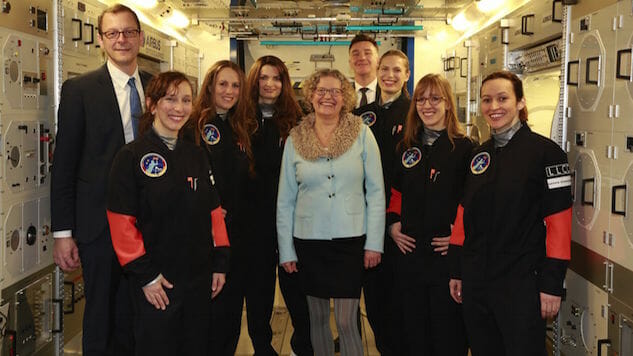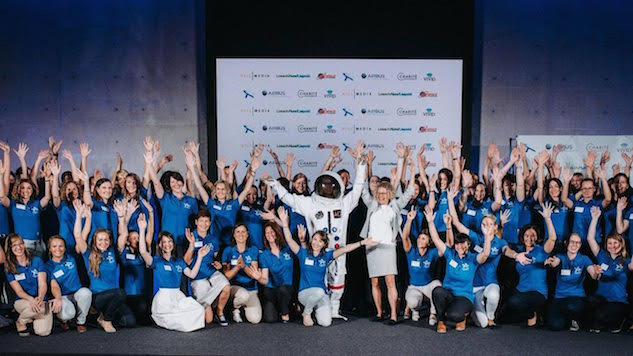Germany’s Female Space Race Takes Off

Apart from the United States and Russia, Germany has sent the most humans into space. The country’s 11 astronauts are generally a source of pride among Germans, save for one unavoidable detail: Every single one of those space travelers has been male.
Claudia Kessler, an aerospace engineer and the CEO of the recruiting agency HE Space, had been keeping tabs on European space selections for years, waiting for a German woman to make it onto a mission. Germany belongs to the European Space Agency (ESA), a 22-member organization that only recruits astronauts every 10 to 15 years. When Kessler began asking why ESA had never chosen a German woman, she repeatedly heard that it was because there weren’t enough qualified applicants.
“I had come across fantastic women who have done so much in their careers—scientists, PhDs—and I thought, ‘It’s not possible. I can’t accept that there are not enough women,’” Kessler said.
So, Kessler launched her own mission. In March 2016, she started Die Astronautin, a public awareness project and crowd-funding campaign that aims to rocket the first German woman into space. Through corporate and public support, Kessler is hoping to raise more than $30 million to train a woman for a 10-day private mission to the International Space Station in 2020.
Throughout Kessler’s 25-year career, she has championed female professional development in the aerospace sector. After coming up with the idea for a female space race, she reached out to her contacts in the field and signed a partnership with the German Aerospace Center (DLR), which agreed to help screen potential candidates and administer aptitude and medical tests. Die Astronautin was ready for take off.
Kessler posted a call for applicants on HE Space’s website, seeking German-born women between the ages of 27 and 37 with degrees in science and engineering or military equivalents. She found that her instincts had been right all along—there were plenty of qualified female professionals all over Germany. More than 400 of them answered the listing, a 32 percent increase from the number of German women who had applied to the last ESA mission in 2009.
Suzanna Randall, an astrophysicist working in the city of Garching, came across Die Astronautin’s ad on a German news website. As a researcher at the European Southern Observatory, Randall’s interests are stellar evolution and pulsations. She also works as support staff at the ALMA observatory, the world’s most largest telescope at millimeter and submillimeter wavelengths. She had always dreamed of not just observing space through a lens, but exploring it herself—she had even made it to the second round of ESA’s 2009 selection process. Randall saw Die Astronautin as another opportunity to get closer to the stars.
“I was always fascinated by the idea that we, and robots we had made, could leave our planet and go somewhere else to see all these strange and exotic objects,” she said. “Applying for this wasn’t even a question.”
 Photo courtesy of Die Astronautin
Photo courtesy of Die Astronautin